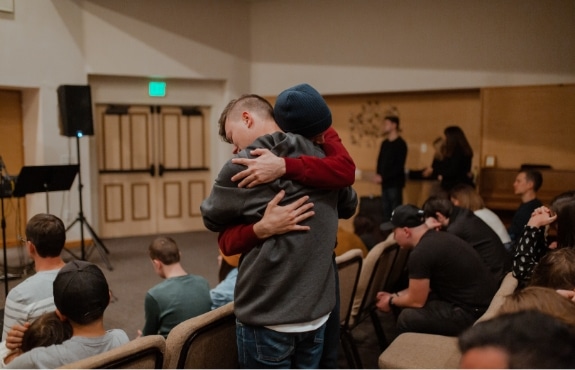
The Facts
Teen drug abuse is a growing problem. No, it’s not marijuana that we’re concerned about, but FDA approved medications. The 2012 Partnership Attitude Tracking Study with DrugFree.org found that 1 in 4 teens have misused or abused prescription drugs in their lifetime. This is an increase of 33% from just five years earlier. The study found that teens abused stimulants such as Ritalin or Adderall , even if they did not have ADHD. Prescription painkillers were used for a variety of reasons, including to have fun, to look cool, and to treat pain. No matter the kind of prescription drug abused or why, most teens said they got them from a friend or family member, usually for free.
Over-the-Counter (OTC) teen drug abuse is also of concern. Cough medications with dextromethorphan (DXM) are the third most abused pharmaceutical drug by teens, after Adderall and Vicodin. Because it is available without a prescription, abuse of cough medicine is even more prevalent. However, to get high from DXM a user has to ingest dangerously large dosage.
After marijuana, prescription and OTC drugs are the most abused drugs by adolescents. Industry professionals and research teams have found the availability and perceived safeness of these drugs make teens more likely to abuse them. Because they are prescribed to someone, adolescents do not see prescription drugs, particularly stimulants, as dangerous or as addictive than illicit drugs. Parents who perceive prescription drugs as less dangerous than illicit drugs also implicitly condone abuse of these drugs. Prescription and OTC drug abuse is dangerous, particularly when used in combination with other drugs and alcohol (called Polysubstance use).
The Reasons
Like many things they do, we question why teens of all backgrounds abuse drugs. The PATS study found that 70% teens didn’t know why they abused pharmaceutical drugs. The rest indicated they used the drugs recreationally, to fit in, and as a way to deal with problems.
- Painkillers/opiates, such as vicodin or oxycodone, inhibit nerve cells and creates numbing effects in both the mind and body. They are often used recreationally, but are also used as an unhealthy way to deal with emotional problems.
- Depressants, such as Xanax or Ambien, alters brain chemistry and makes users feel intoxicated. They are used recreationally and as a way to deal with emotional problems.
- Stimulants, such as Adderall or Ritalin, alters brain chemistry to focus the users. Many adolescents take these as a way to deal with pressures at school.
- Steroids introduce extra hormones that affect the body. These are often abused by athletes to increase their performance.
- Cough-medicines and other OTC alters brain chemistry. These are mostly abused for recreational purposes.
Adolescents using any of these risks developing a chemical dependency. Dangers from even casual use include permanent damage to developing minds and bodies, and even death. Ingesting too much Adderall, an amphetamine, for example, can cause seizures, tachycardia (fast heartbeat), motor or verbal tics, mania, and many other severe symptoms. More people die from prescription painkiller overdose than from all other illegal drugs. As with all drugs, abuse of pharmaceuticals can lead to risky behavior such as unsafe sex and drugged driving.
Does your Teen have a Prescription Drug Abuse Problem?
If you believe that your teenager may be abusing prescription drugs, here are some symptoms/early warning signs of teen drug abuse to be aware of.
Signs and Symptoms
- Agitation, Anxiety, Mood Swings
- Constricted Pupils, Slurred Speech, Flushed Skin, and Sweating
- Weight Loss or Loss of Appetite
- Sleepy or Lethargic
- Restlessness or Excessive Energy
- Forgetfulness, Clumsy
- Neglecting Responsibilities
- Legal Trouble
- Relationship Problems
- Missing Pills, Unidentified Pills, Empty Pill or Cough Syrup Bottles or Packages
- Withdrawn, Loss of Interest
- Running Out of Medication, Requesting Refills, Losing Pills
Associated Risks of Prescription Drug and Over-the-Counter Medication Abuse
- Unintentional Injuries
- Physical Fights
- Academic and Educational Problems
- Illegal Behavior
- Additional Health risks (heart disease, liver and pancreas complications, etc.)
- Psychological Disorders (depression, anxiety, anti-social personality disorder, etc.)
Prevention Tips
- Educate yourself on prescription and OTC medication abuse.
- Educate your child on the ill effects of pharmaceutical abuse and addiction.
- Be involved in your child’s activities.
- School Connectedness – parent/teacher involvement with students
- Know where your medications are and how many you have.
- Properly dispose of unused medications.
- Talk openly with your teenager.
- Encourage your teenager to talk openly with you.
Resources:
- The Center for Disease Control – Healthy Youth
- National Institute on Drug Abuse for Teens
- The National Survey on Drug Use and Health Report
- Office of National Drug Control Policy
- Substance Abuse Treatment Programs for Adolescents: Bradford Health Service
Bradford Health Services’ adolescent program offers comprehensive, individualized treatment for young people. The program is designed to help teenagers and their families find their way back from substance abuse and behavioral problems. Treatment is designed to address the special needs of adolescents, emphasizing individualized academic programs, therapy through recreation, and proven clinical approaches. The program is structured, stimulating, and challenging. It focuses on teenagers from 14 to 18 years old and their families.
Related Content



